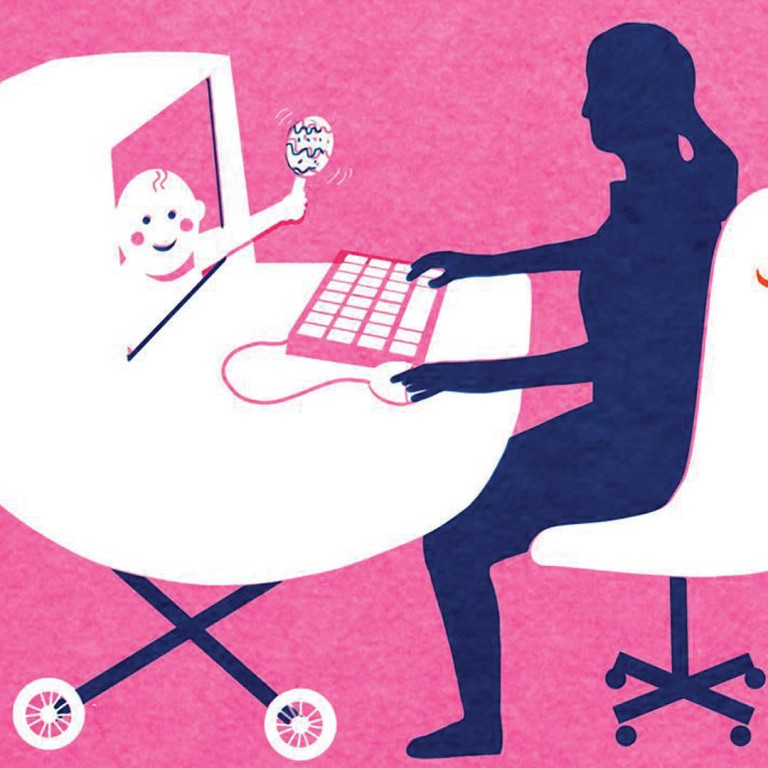
Hong Kong needs sustainable development on the family front, too
Paul Yip says couples, businesses and officials should team up to raise the city's dismal fertility rate
This month, the Family Planning Association of Hong Kong launched a new TV announcement promoting family planning for young couples. The advert raised some eyebrows and initiated discussion about Hongkongers' preferred family size. Many feel the association seems to be promoting a larger family (even form a basketball team!) without realising the difficulties of raising children in Hong Kong.
In view of a rapidly ageing population and a very low fertility rate in Hong Kong - about 1.00 per woman excluding the births of non-Hong Kong residents, well below the replacement level of 2.1 per woman - we do need more young people to maintain a healthier population structure and achieve a sustainable development.
Hong Kong households have been downsizing, from 4.5 in 1971 to only 2.9 in 2015, and it is still decreasing. Interestingly, more couples are keeping pets while fewer are having babies.
Our latest territory-wide survey suggested that there is a discrepancy between the ideal and actual number of births among married women, with about 40 per cent reporting that their actual number of births is lower than the ideal number. These women were aged 15 to 39, have postsecondary school educations and are employed.
Our study also shows that the one-child family is the mode among married couples, though the ideal is having two children. Furthermore, 20 per cent of young married women preferred to remain childless. Those who preferred no children or one child said the main reasons included the responsibility and the heavy financial burden of raising children.
We proposed 19 pro-natalist policies and asked respondents which of them they preferred. Among women who indicated they desired children, but are either childless or have fewer children than they wanted, the top four were: education subsidies (78 per cent), medical subsidies (76 per cent), free kindergarten education (73 per cent), and buy/change/rent house subsidies (72 per cent).
Among women who weren't sure they wanted children, they said these six policies might influence their decision: education subsidies (81 per cent); medical subsidies (79 per cent); buy/change/rent household subsidies (76 per cent); free kindergarten education (74 per cent); powdered milk subsidies (73 per cent); and paid parent-child leave (70 per cent).
All these findings suggest that the major reason for low fertility was not the married women's lack of interest in having children, but rather a compromise to have fewer to make life more manageable given their desired affordability and responsibility levels.
How to alleviate the financial and emotional pressure of childbearing and increase their perceived control should be the major concern in formulating any pro-natalist policy.
Specifically, some of the following measures would be beneficial:
- Improve living conditions by increasing the supply of both public housing units for rent and subsidised housing units for purchase and relaxing the restrictions on middle-income families, and by providing assistance to allow young couples to buy homes.
- Promote a family-orientated working environment by allowing flexible working hours for families with young children, and by reducing long working hours and changing the culture of long working hours.
- Provide a more flexible leave arrangement for both mother and father. With a more flexible working arrangement, the measure can allow women to help solve the problem of our anticipated labour shortfall without compromising quality of care for children.
- Increase the number of childcare centres at the district level (the shortfall is especially severe in districts with high fertility, such as Yuen Long and Tin Shui Wai), and upgrade the current facilities to better suit the needs of working parents in terms of operating hours.
- Implement financial and tax assistance to those raising children.
- Enhance learning opportunities and the learning environment for primary and secondary school students to ease the worries of parents.
Among these recommended measures, a community response with the assistance from the business sector is needed. It is unfair to ask the business sector to pay for all parental leave. Perhaps the government can subsidise part of the cost.
The Bauhinia Foundation Research Centre has estimated that it costs parents HK$6 million to raise each child. The general population can do better than that with existing government support, which provides each child a free education up to year 12 and a high quality of medical and health service. However, there are many excellent students who have been educated much more affordably.
The decision to have children or not lasts a lifetime; it is still very much an individual decision, and there are joys and worries in equal measure in bringing up children. However, we appeal to the community to offer empathetic support to couples who do aspire to become parents.
Finally, the responsibility of raising children should not lie only with the parents, but the state should also have a stake in it. These young children eventually become part of the workforce. We need them and value them. The core message of the association's TV announcement is not just promoting having a large family, but also about planning. Couples who want children shouldn't "miss the boat", and as for how many children to have, it's wonderful to have the freedom to make their own choice.

